When IndyCars ran off road
Dirt tracks were ingrained in Indy car history, but as a new glamorous age dawned they were deemed surplus to requirements. Preston Lerner revisits the 1970 Golden State 100, destined to become the last of the dirt races

Billy Vukovich kicks up a storm in Champ Car’s last ever dirt race, in 1970. He’d finish third
When 18 dirt Champ Cars took the green flag at the California State Fairgrounds in Sacramento in 1970 and arced through the first turn in long, graceful power-slides, it marked the end of an Indycar era that predated the first Indy 500 in 1911. Never again would Indy cars run on dirt in a race that counted toward the national championship.
“It was the car owners’ idea. They didn’t want to spend the money on the different cars,” says Al Unser. “It didn’t make any difference to me what kind of car I was driving. A race car is a race car. The cars I liked most were the cars I could win in.”
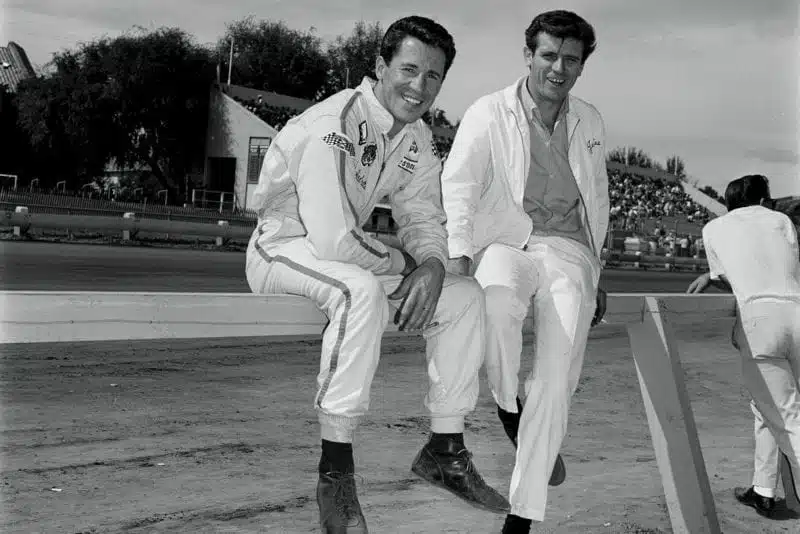
Mario Andretti, left, with car restyler Dean Jeffries at Sacramento, the last championship dirt race – to Mario’s disappointment
Getty Images
According to this standard, Unser liked almost all of the cars he drove that year. Belted into a front-engined dirt car or a rear-engined pavement chassis, Unser won 10 of 18 races on superspeedways, short ovals, road courses and mile-long fairground tracks. The next year he won five more races, including Indy for the second year running. But this time around, every race on the schedule was run on a paved oval. The paradigm shift away from dirt was complete.
Indycar racing gets its name from the Indianapolis Motor Speedway, and what made Indianapolis so special was its singularity. Well into the 1950s, it was the only major circuit in America featuring a paved surface, first bricks and later asphalt. Board tracks, which had proliferated during the Roaring Twenties, died during the Depression. That left Indy and a boundless nation teeming with dirt tracks of various shapes and sizes. And while a handful of thoroughbreds were built specifically for the Brickyard, the vast majority of American open-wheel race cars were designed to do double duty.
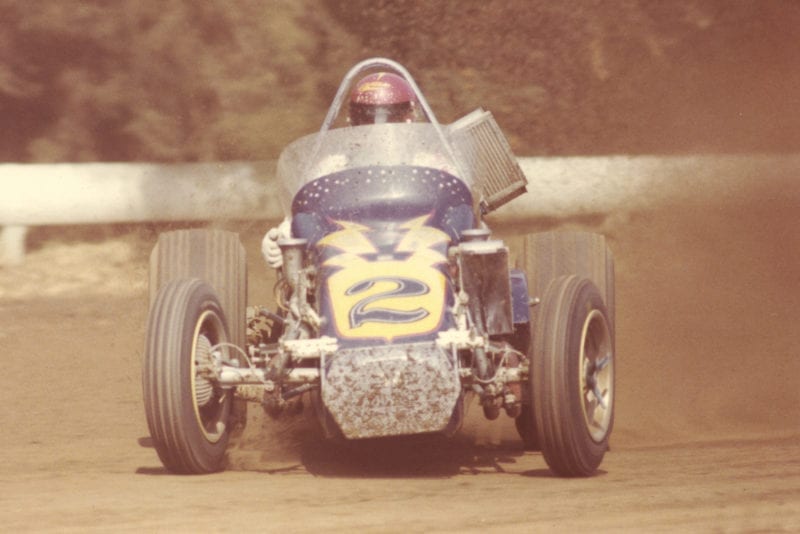
Al Unser won as he pleased in his Bignotti-modified Johnny Lightning special
The landscape changed in 1954, when the Milwaukee Mile was paved. Three years later, another paved oval opened at Trenton. With each getting two races a year on USAC’s so-called Championship Trail, top-tier owners suddenly needed two cars in their stables – a longer, lower roadster for paved tracks and a more upright chassis for the dirt. Mechanically, though, the cars were two peas in a pod, both with a pair of solid axles, torsion bars all around and the engine in front of the driver, where God and Frank Kurtis decreed it ought to be. The same architecture was found in shorter and lighter sprint cars, and midgets, which were smaller still.
Then Jack Brabham showed up at Indianapolis in 1961 with a modified rear-engined Formula 1 Cooper-Climax that was mocked as a ‘funny car’.
A lone gazelle among a herd of elephants, Brabham’s Cooper was overmatched by the Offy-powered roadsters. But a mere two years later Jim Clark finished second in the 500 in a Lotus-Ford. By 1965, when he obliterated the field in the seminal Lotus 38, Indy roadsters were obsolete. Team owners now had to invest in newfangled rear-engine funny cars that shared no technology with their existing dirt Champ Cars.

Built for horse racing, Sacramento for years featured splinter-making wooden rails. This is 1965, as AJ Foyt (1) and Larry Dickson scrabble for grip
Getty
There was plenty of consternation. “The guys who couldn’t drive on the dirt felt that the guys who could had an advantage in winning the national championship,” says Jim Dilamarter, the Vel’s Parnelli Jones Racing crew chief for Al Unser. “Number Two, a lot of owners had spent a lot of money on rear-engined cars and they didn’t want to spend more on dirt cars that could race only five times a year, especially if their driver wasn’t that good on the dirt. Also, don’t forget there were a lot of English and Australian and Kiwi mechanics coming over. They didn’t know dirt, and they just wouldn’t touch those cars.”
Just about the only people who wanted to keep dirt tracks on the schedule were – as you might expect – the guys who excelled on them. “To be a national champion, you had to be able to score on dirt, on short ovals, on superspeedways and on road courses, and I loved that challenge,” says Mario Andretti, who just happened to have earned a national championship in 1969 by winning on dirt, a short oval, a superspeedway and a road course – plus the hillclimb at Pikes Peak. “Driving on dirt helped me in so many ways – car control, always searching for grip, dealing with changing conditions, driving in the rain on road courses. Something always correlated between disciplines.”
“I’d see guys before qualifying and they’d be as white as a sheet”
The decision to abandon dirt tracks was a done deal by the middle of the 1970 season. So everybody knew the Golden State 100 in Sacramento was going to be the last dirt race on the Champ Car schedule. But despite its historic nature, most teams weren’t gung-ho about entering the race, which paid the smallest purse of the year and entailed a long, arduous tow to Northern California.
Adding to the logistical nightmares, the Trenton 300 had been rained out the previous week and rescheduled for the day before the race in Sacramento. The teams had been forced to send the dirt cars out to California while their drivers raced on the asphalt in New Jersey, 3000 miles away. Unser led all but five laps and lapped the field at Trenton before flying to San Francisco on Saturday night and flogging a rental car to Sacramento. “I woke Aggie [legendary race promoter JC Agajanian] at 2.30 in the morning to find out where we were staying,” Unser says.
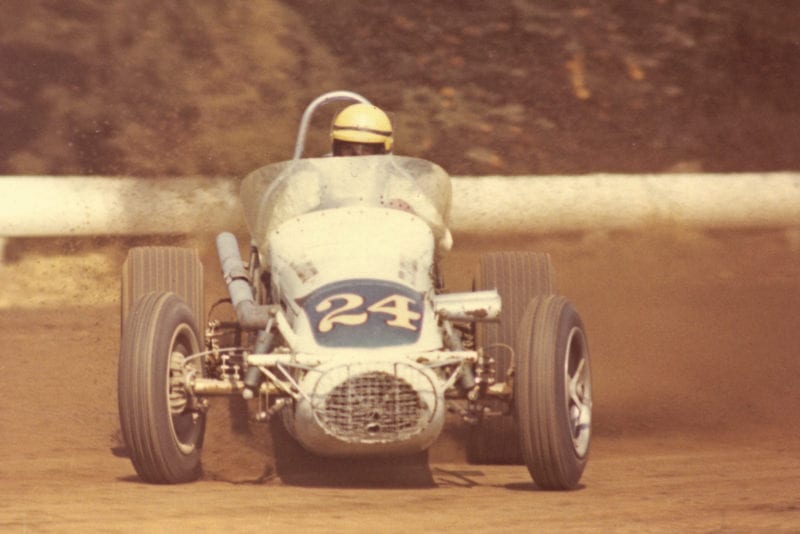
George Snider using Offy power to chase second
More than half the drivers who raced at Trenton didn’t bother to make the transcontinental trip. (To be fair, a lot of them were pavement specialists.) The 25 cars that did arrive in Sacramento were a ragtag collection. Andretti was one of the only drivers with a new-for-1970 entry – a bright red STP-sponsored chassis designed by Grant King. But most of the cars had been built five, 10, 15 years earlier, and Tom Bigelow even managed to squeeze into the show in a Kurtis 4000 laid down in 1951.
Bigelow was one of Indy’s most tenacious Bump Day warriors. He bumped his way into the 500 on the final day of qualifying five times and was himself bumped on three other occasions, and he would later be enshrined in both the midget and sprint car halls of fame. “I preferred the dirt Champ Cars to the sprint cars,” he says. “You could hang the ass-end out a little more because they had a longer wheelbase. And that old Kurtis was really good on the dirt.”
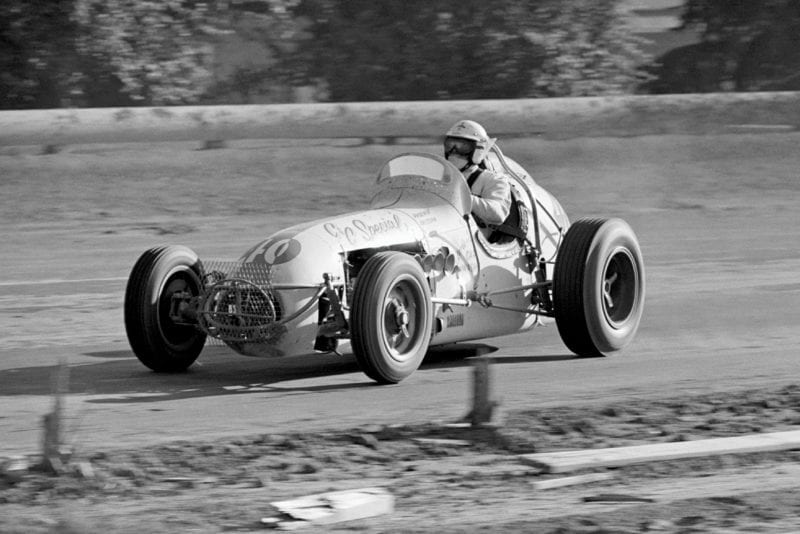
Al Unser wields his Kuzma-Offy in the 1965 Golden State race
Getty
Other than bodywork, there wasn’t much to distinguish a dirt Champ Car built in 1951 from one built in 1970 (although a couple of entries featured – gasp! – rudimentary, first-generation roll cages). The biggest difference was under the gaudily painted hoods.
The most popular engine by far was still a 255-cubic-inch version of the venerable Offenhauser, the Indy car standard since it had been developed in 1933 from a Harry Miller marine engine design. Although down on power, the four-cylinder monoblock Offy was largely bulletproof and well understood by engine tuners young and old. But it was being challenged by the Chevrolet V8. A stock-block motor, the Chevy was cheaper than the Offy, and because it featured pushrods rather than overhead camshafts it was allowed to displace 350 cubic inches, which translated into a bunch of extra grunt.
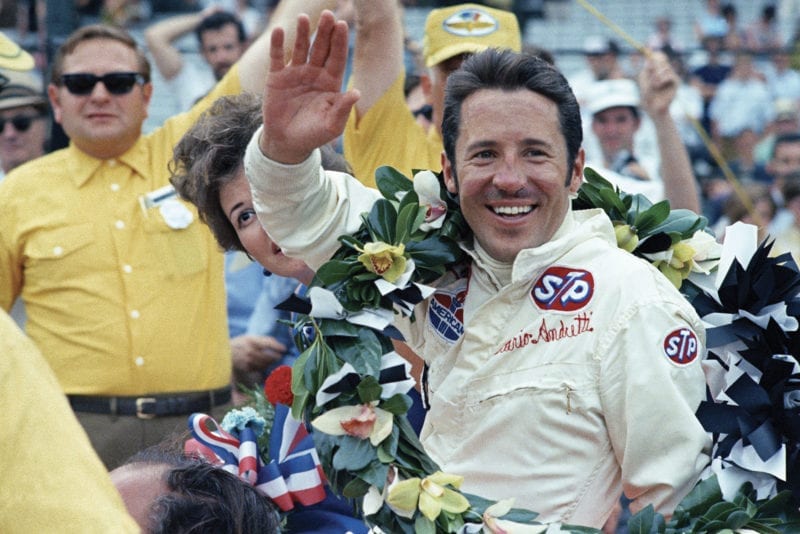
Andretti after ’69 Indy 500 win
AP/Shutterstock
Meanwhile, team boss Andy Granatelli was experimenting with a Mopar V8 hot-rodded by drag-racing stalwart Keith Black for Andretti, but it never generated a following. The pick of the litter was the four-cam Indy Ford, the all-conquering V8 that had been created in Dearborn to help Clark and Colin Chapman win the 500. “The Chevy made a lot of horsepower, but it came on all at once, and that just broke the tyres loose,” says Unser, who had the only Ford in the field. “The Ford was a better motor because it was a smoother motor.”
Like most of the one-mile dirt ovals, the track at the California State Fairgrounds had been built for horse-racing rather than race cars. For many years the inner perimeter was lined by a low wooden guardrail that broke into boards that acted like lethal spears after a crash. “I hated that track,” says Bobby Unser, Al’s older brother. “I’d see guys before qualifying, and they’d be white as a sheet.”
“No other driver went straight from an F1 race to a dirt race”
By 1970, fortunately, the guardrail had been replaced by a dirt bank. Bobby overcame his aversion to the track to qualify second in a one-off ride he’d secured for the occasion. (“I drove everything I could get,” he says.) Andretti stuck his car on the pole, with dirt wizard George Snider third and Al a surprising fourth in his metallic-blue and gold Johnny Lightning Special. Not that the VPJ team was worried about starting so far back.
“The tracks were muddy and wet during hot laps and qualifying, and the Chevys and the Offys could dig in there because of their torque,” Dilamarter recalls. “But once the race started the tracks were like pavement, which was perfect for the Ford, so as the race progressed Al got better and better.”
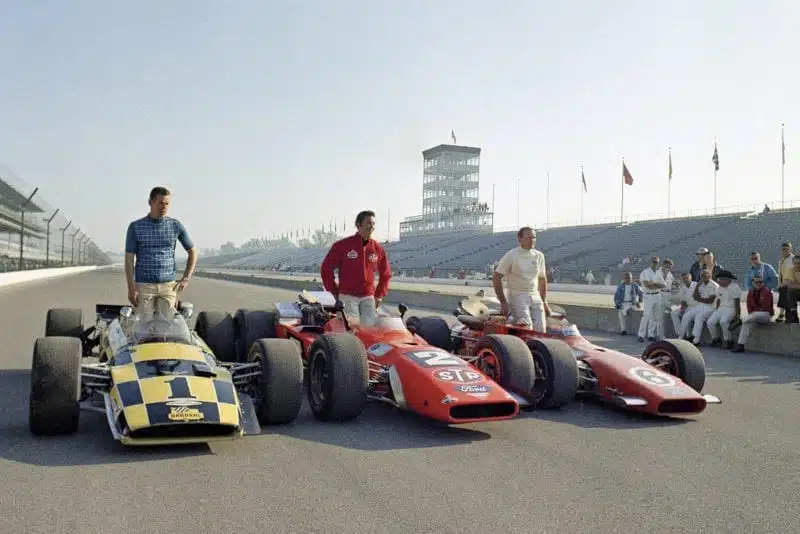
Unser, Andretti and Foyt
AP/Shutterstock
Engine aside, Al also had an unfair advantage in the chassis department. George Bignotti, the unconventional genius who would become the crew chief with the most wins in Indycar history, had altered the suspension attachment points to improve the handling. The previous year at Sacramento, Al had dominated so thoroughly that he’d won despite breaking the rear suspension two laps from the finish. And this year he’d already swept all four of the dirt races on the Champ Car circuit. So, he was the prohibitive favourite going into the race.
After the start, Bobby powered to the front as the field pitched their cars sideways, dirt spraying off their rear tyres, but Andretti elbowed his way past to lead the first lap. Al cruised by Andretti on lap two and said, “See ya!”. Andretti had to work hard to fend off Snider before losing 10 laps in the pits while his throttle linkage was repaired. Chasing Snider was a tightly bunched pack consisting of Gary Bettenhausen, Bobby Unser, Billy Vukovich, dirt specialist Greg Weld, Roger McCluskey and Johnny Rutherford.
Four distinct engine notes reverberated off the grandstands as the cars oversteered around the track, their drivers searching for grip. Salt Walther hit the fence. Vuky sneaked past Bobby and chased Bettenhausen. Lone Star JR overcooked it and Mario couldn’t avoid the wreck, knocking both of them out. Bettenhausen lost a wheel and spun, falling behind his younger brother, Merle. The dirt cushion up high wore away, forcing the drivers to hug the bottom line. Through it all, Al circulated serenely in the lead, running high, low, middle, wherever. At the finish he was a mere six seconds ahead of Snider only because cautions had bunched up the field.
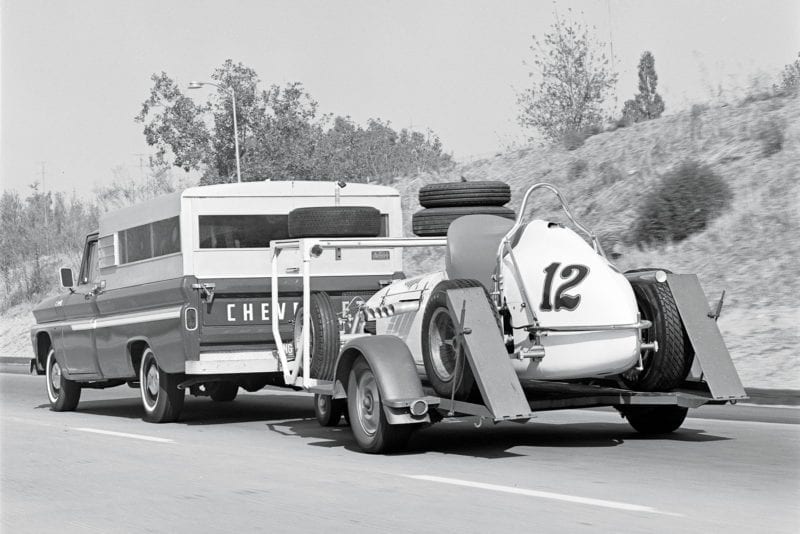
Long haul: Mario’s Kuzma-Offy is towed to Sacramento for the ’65 Golden State race
Getty
Dirt Champ Cars didn’t disappear after Sacramento, so USAC inaugurated a separate National Dirt Car Championship for them in 1971. The first four titles were won, in order, by Snider, A J Foyt, Al Unser (still driving his Bignotti-modified Grant King chassis) and Andretti. But by 1975 the series was dominated by dirt specialists who rarely raced Indy cars. In 1981 the cars were reclassified under the Silver Crown heading. Although several champions graduated to careers in NASCAR, most notably Jeff Gordon and Tony Stewart, the series boasts none of the prestige once commanded by the dirt Champ Cars.
These days, the NTT IndyCar Series bills itself as the most versatile championship in the world, and it’s got the mixture of racetracks to justify this claim. But what passes for variety in 2019 seems positively mundane compared with the motor sport world a half-century ago, when drivers were expected to race anything and everything. “No other driver went from a Formula 1 race in Austria to a dirt Champ Car race at Springfield in back-to-back weekends,” Andretti says.
And no other driver ever will.
